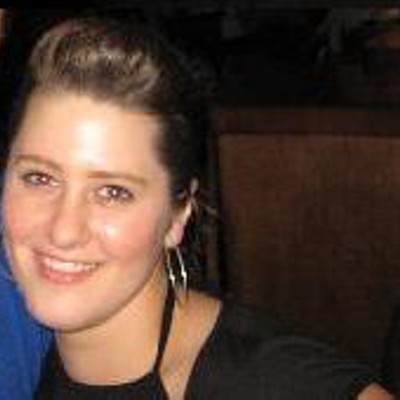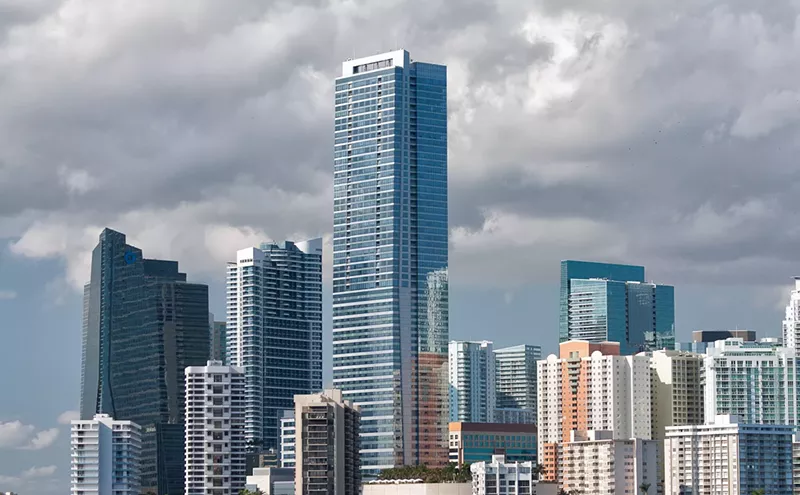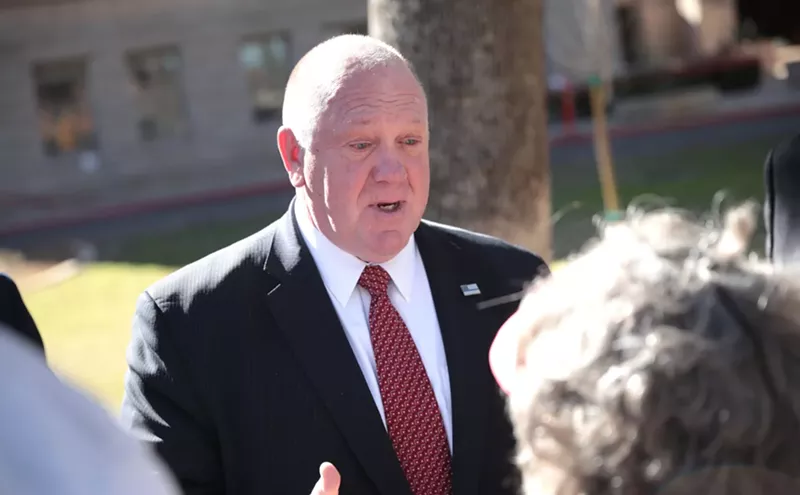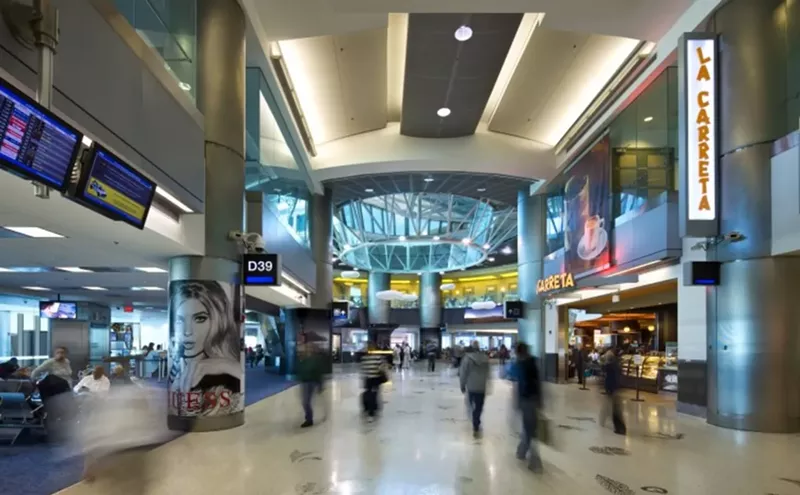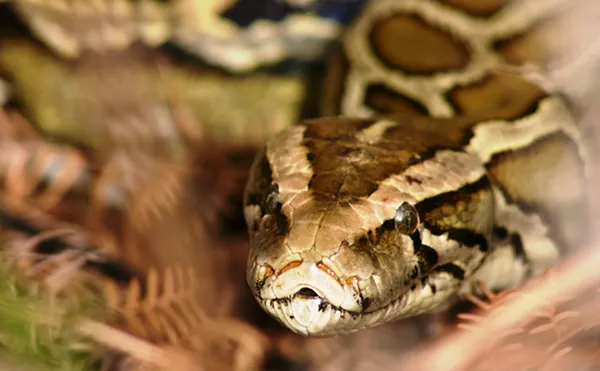It's a scorching late-October morning, and the sky is a pristine shade of chlorinated-pool blue. Todd, a shirtless man riding a rusty maroon Schwinn with a white basketful of trash, brakes suddenly. He leans his bike on its side, causing a few crushed cans to fall to the hot concrete. He then places his hands on his hips, polluting a five-foot radius around his sunburned body with a home-brewed musk that reeks of wet dog, cigarettes, and day-old Pollo Tropical.
Todd squints up at two turkey vultures slowly circling the Miami-Dade Civil Courthouse on Flagler Street. "They look like Freddy Krueger with wings," he cries in a mucous-riddled voice. "Those things are disgusting. I've seen them eat garbage! Or maybe they're attracted to all the lawyers. You know, birds of a feather."
In Miami, the leaves never change color. Nor does it snow. About the only signs of seasonal change are the Santa's Enchanted Forest banners on the Palmetto Expressway — and lower FPL bills. So it has come to pass that some civic-minded folks depend on an annual flock of black-feathered, scaly-faced scavengers to indicate the beginning of autumn.
Some of the more superstitious courthouse denizens believe the buzzards are reincarnated judges who began roosting atop the hall of justice when it was Florida's tallest building and they could see both the Atlantic Ocean and the Everglades.
A quarter-century ago, a Miami-Dade Community College professor named Marilyn Gottlieb-Roberts proposed that the vultures come to Miami from a suburb of Cleveland called Hinckley. "We've been welcoming the birds for many years," she told United Press International. "Our vultures sit on top of the courthouse. They make a beautiful flight across Biscayne Bay for lunch at Virginia Key, the city dump, then come right back to the courthouse."
Bob Hinkle, chief of outdoor education for parks in Cleveland, says it's "a high possibility" the buzzards come to Miami from Hinckley. Then he offers interesting factoids about the mysterious snowbirds: They lack vocal cords and thus can only hiss when they're upset. They vomit when they're threatened. And if they become overheated, they defecate on their legs to cool down. Speaking of feces, you can even eat theirs. The enzymes in their stomachs are like nuclear weaponry to germs. "It's pure," he says.
No shit.
The birds began flocking to northeastern Ohio in 1814, when the Great Hinckley Hunt was first held. Locals slaughtered game mainly to rid the area of varmints such as black bears and mountain lions. Residents took what they could use for food and left the carcasses as a kind of smorgasbord of death. The vultures devoured it and began returning each year on the same date — March 15 — for a new meal. "We like to think that the buzzards bring the spring back home with them," Hinkle says.
In the '80s and '90s, the Miami Herald would write — and usually overwrite — about the birds' arrival in the Magic City each fall around November 1. The "dark-winged angels," reporter Geoffrey Tomb wrote, "are as big as a fixed-wing Cessna, as dark as Dracula's heart." Like a vulture, he would vomit pretty much the same prose year after year.
So I head to the Flagler Street courthouse in search of turkey vultures. I see but two soaring far above the pointed peak. An attorney with thinning hair who goes by the name Patrick S explains new construction might have something to do with the paucity. "Actually, I haven't seen many for a couple of years," he says. "I mean, you'll still see one or two flying overhead or maybe one by a court window once in a blue moon, but there's never a huge flock anymore. This isn't the tallest building in Miami anymore, so I think they've spread out."
Where exactly have they gone?
"I've seen some perched on the Julia Tuttle," he says, referring to the I-195 causeway over Biscayne Bay. "And along Brickell. Actually, I've seen more lately at the justice building."
So off I go to the Richard E. Gerstein Justice Building on NW 12th Street. I arrive at noon to discover that Patrick is right. Circling above the parking lot are about a dozen buzzards.
Across the street, I run into Edgar, a hot-dog vendor in a faded purple polo shirt and blue baseball cap. I ask him if he ever has problems with the vultures.
"The crows bother me," he says with a bright smile. "But not the buzzards — they're not interested in my food. They're more interested in the sacrificed chickens and lambs that all the people practicing Santería and vodou leave around here."
Excuse me?
"For the incarcerated," Edgar says, offering a theory for the buzzards' new digs. "I think it's done by the families of the people who are locked up, but I see it all day long. They pull up in cars, jump out, take some dirt from the courthouse's lawn, and then leave with it. I don't know what they do with the dirt, but if you take a walk around, there's little baggies of corn all over the place too."
A corrections officer walks up to Edgar, high-fives him, and offers in passing: "I've seen people throw live chickens into the lobby of the correctional facility." Then he laughs.
"If I were you, I'd walk across the street to the Miami River and see if there are any dead animals laying along the water," Edgar says. "They do a lot of sacrifices around there, sometimes leaving buzzard buffets."
I walk over to the river. I see lots of broken pottery, some gnawed squash, an orange, a rainbow of plastic grocery bags, but no butchered lamb shanks, pork chops, or poultry feet.
Then, down the river, I notice an old, gray-haired woman dressed in a long, flowing white dress writing something in chalk on a palm tree. As I approach, she gets spooked and flees to a waiting car that takes off.
On the palm, I spot the initials "P.R." written in bold, bubbly letters. Nailed to the trunks of other trees nearby are white paper streamers tangled with twigs and leaves. On the other side of the river, three buzzards feast on something, but I can't make out their afternoon delight.
Ah, the beauty of Miami in the fall!


